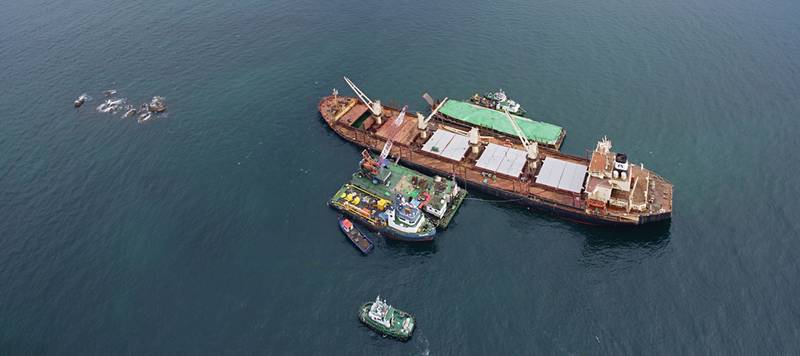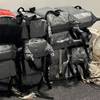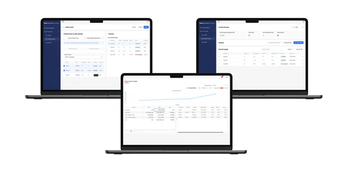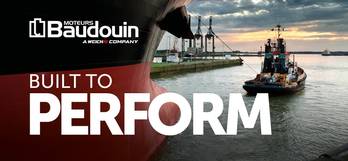Nontank VRP Regs
The clock is ticking toward the deadline to submit to the U.S. Coast Guard an oil spill response plan that meets the requirements of the NTVRP regulation.
The long-awaited nontank vessel response plan (NTVRP) rulemaking was published on September 30, 2013 and came into effect on October 30, 2013. Neither of these are significant dates for the owners, operators, and masters of nontank vessels operating on the navigable waters of the United States. The truly significant date is January 30, 2014. This is the deadline for submittal to the US Coast Guard of an oil spill response plan that meets the requirements of the NTVRP regulation.
There are many good things about the NTVRP. Planning for oil spill response and preparation for an actual response effort are important and have been shown to ultimately reduce both the number and severity of oil spills.
Space limitations, though, prevent me from summarizing the details of this complex rulemaking. Instead, this article will have to focus on a few aspects of the rule where things have gone astray or there is room for improvement.
Wrapped Around the Axle
The Coast Guard has unfortunately gotten itself wrapped around the axle with regard to the geographic coverage of this regulation. Not inconsistently with the enabling legislation, the regulation states in new 33 CFR § 155.5015(a) that the NTVRP regulations apply to each self-propelled vessel that: (1) carries oil of any kind as fuel for main propulsion; (2) is not a tank vessel or is not certificated as a tank vessel; (3) operates upon the navigable waters of the United States, as defined in 46 U.S.C. 2101(17a); and (4) is 400 gross tons or more as measured under the convention measurement system in 46 U.S.C. 14302 or the regulatory measurement system of 46 U.S.C. 14502 for vessels not measured under 46 U.S.C. 14302. For this purpose, “navigable waters of the United States” means the territorial sea out to 12 nautical miles seaward of the baseline from which the territorial sea is measured and those internal waters subject to the ebb and flow of the tide and those non-tidal waters that either are historically navigable by interstate or foreign commerce or are navigable in fact.
The new NTVRP regulation then attempts to require that the oil spill response plans prepared for nontank vessels include response planning for waters in the offshore area and the open ocean area as defined in the original vessel response plan regulations. The original vessel response plan regulations were intended for use with regard to tank vessels.
The oil spill response plan requirement for tank vessels, as enacted in the Oil Pollution Act of 1990 (OPA 90), extended out to 200 nautical miles offshore. A vessel, other than a tank vessel, operating seaward of the navigable waters of the United States (as defined at 33 CFR § 155.5015(a)(3)), is just a vessel. By law, there is no such thing as a nontank vessel further offshore than 12 nautical miles. Therefore, the Coast Guard is acting outside its authority (i.e., in an ultra vires manner) when it purports to require nontank vessels (or at least foreign nontank vessels) to prepare and submit response plans that address a spill or the substantial threat of a spill that occurs more than 12 nautical miles offshore.
That said, it must be recognized that the owners and operators of all vessels (and facilities) from which oil is discharged without a permit are responsible under the law responding to that discharge if it occurs in waters subject to the jurisdiction of the United States, out to 200 nautical miles offshore. Only tank vessels are required by law to develop, implement, and submit for approval by the Coast Guard oil spill response plans for discharges more than 12 nautical miles offshore.
It behooves the owner or operator of a vessel other than a tank vessel to develop and implement a response plan covering discharges of oil more than 12 nautical miles offshore if the vessel regularly operates in waters more than 12 nautical miles offshore – but such a plan is not required by law.
Salvage and Marine Firefighting
The NTVRP regulations (and now the VRP regulations) include salvage and marine firefighting requirements. In this regard, the recent NTVRP rulemaking has wording that raises some questions.
The NTVRP regulation requires response plans for nontank vessels with a fuel capacity of 2,500 barrels or greater to “meet the salvage, emergency lightering, and marine firefighting requirements found in subpart I”. Subpart I, the salvage and marine firefighting regulations, in defining the term “assessment of structural stability”, requires that the assessment be consistent with the conditions set forth in 33 CFR § 155.240. This latter regulation requires, among other things, that vessel baseline strength and stability characteristics be pre-entered into a computerized, shore-based damage stability and residual structural strength calculation program. Numerous nontank vessels have not currently calculated their baseline strength and stability characteristics, let alone have those calculations pre-entered into a shore-based stability and strength calculation program.
If those characteristics were ever calculated, they generally have not been updated to account for changes and alterations made to the vessel. Thus, this regulatory requirement may impose an unanticipated burden on many owners and operators of covered nontank vessels. To make matters more confusing, new regulation 33 CFR § 155.5035(c)(11) provides that pre-entering of these characteristics is optional. Alternatively, the owner or operator of a nontank vessel may maintain ashore a copy of the vessel plans necessary to perform salvage, stability, and hull stress assessments. The Coast Guard may wish to clarify these provisions.
Nontank vessels with a fuel capacity of less than 2,500 barrels but greater than or equal to 250 barrels are not required to have salvage and marine firefighting contracts, but must plan for and identify salvage, emergency lightering, and marine firefighting resources and include in their plans a written consent for plan listing from the recognized response resource provider. In the NTVRP preamble, it states, in pertinent part, that the owners and operators of these nontank vessels must provide those resource providers with a copy of the nontank vessel’s pre-fire plan. The resource provider must agree that the pre-fire plan is acceptable and agree to implement it to mitigate a potential or actual fire. This language in the preamble seeks to impose a requirement that is not found in the actual rule.
Foreign Vessel Not in Innocent Passage
The NTVRP regulation clearly and correctly states that it is not applicable to a foreign-flag vessel engaged in innocent passage through the territorial sea or transit passage through a strait used for international navigation, unless that vessel is bound for or departing from a port or place of the United States. There is no mention, though, in the rulemaking about two specific geographic areas where this legalistic approach will create friction – the Great Lakes and the Strait of Juan de Fuca.
Waters of the Great Lakes are internal to the United States and Canada and the boundary in those Lakes is specifically defined. Because waters of the Great Lakes are internal, there is no right of innocent passage. A Canadian flag vessel operating on the US side of the Great Lakes boundary is required by US law and regulation to have a NTVRP (unless the two nations agree to an alternative approach). Likewise, a non-Canadian foreign vessel calling at a Canadian port in the Great Lakes is required to have a NTVRP, since it is physically impossible to enter the Great Lakes from the sea without going through some US waters.
With regard to the Strait of Juan de Fuca, the United States has long taken the position that the status of those waters is unique (i.e., sui generis) and that neither the concept of innocent passage nor the concept of transit passage applies. Thus, any nontank vessel bound to or from a port or place in British Columbia via the Strait of Juan de Fuca will be required to have a NTVRP if it operates on the US side of the international boundary. Since the US-Canada Cooperative Vessel Traffic Service for the Strait requires vessels in-bound through the Strait to stay on the south (US) side of that waterway, there is almost no way to avoid this situation.
A similar conundrum was encountered with regard to the US tank vessel response plan regulations in 1993. At that time (as I recall), the two nations agreed that their response plan requirements were functionally equivalent and vessels that compiled with Canadian response plan requirements were considered by the US Coast Guard to be in compliance with US VRP requirements. The same may not hold true now. The US has included such requirements as salvage and marine firefighting in its response plan regulations – requirements that are not included in the Canadian regulations. Thus, questions must be raised regarding vessels transiting US waters of the Great Lakes and the Strait of Juan de Fuca without a valid US NTVRP.
Conclusion
With the exceptions noted above, the new NTVRP regulation greatly improves the response readiness of nontank vessels with respect to oil spills in the navigable waters of the United States. Experience with tank vessels also shows that oil spill response planning helps to reduce the frequency and volume of oil spills. As the tanker industry learned, prevention is a lot less expensive than attempting to clean up afterwards.
Dennis L. Bryant,
Maritime Regulatory
Consulting, Gainsville, Fla.
t: 352-692-5493
e: [email protected]
(As published in the November 2013 edition of Maritime Reporter & Engineering News - www.marinelink.com)














